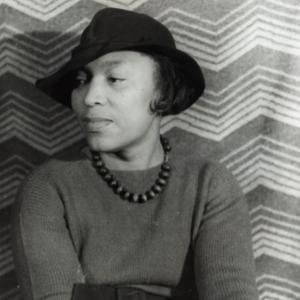

 Pinnacle Press
Pinnacle Press
De Turkey and De Law: A Comedy in Three Acts


Key Metrics
- Zora Neale Hurston
- Pinnacle Press
- Paperback
- 9781374866218
- 9.21 X 6.14 X 0.23 inches
- 0.37 pounds
- Humor > General
- English
 Secure Transaction
Secure TransactionBook Description
This work has been selected by scholars as being culturally important and is part of the knowledge base of civilization as we know it.
This work is in the public domain in the United States of America, and possibly other nations. Within the United States, you may freely copy and distribute this work, as no entity (individual or corporate) has a copyright on the body of the work.
Scholars believe, and we concur, that this work is important enough to be preserved, reproduced, and made generally available to the public. To ensure a quality reading experience, this work has been proofread and republished using a format that seamlessly blends the original graphical elements with text in an easy-to-read typeface.
We appreciate your support of the preservation process, and thank you for being an important part of keeping this knowledge alive and relevant.
Author Bio
Zora Hurston was a world-renowned writer and anthropologist. Hurston’s novels, short stories, and plays often depicted African American life in the South. Her work in anthropology examined black folklore. Hurston influenced many writers, forever cementing her place in history as one of the foremost female writers of the 20th century.
Zora Neale Hurston was born in Notasulga, Alabama on January 15, 1891. Both her parents had been enslaved. At a young age, her family relocated to Eatonville, Florida where they flourished. Eventually, her father became one of the town’s first mayors. In 1917, Hurston enrolled at Morgan College, where she completed her high school studies. She then attended Howard University and earned an associate’s degree. Hurston was an active student and participated in student government. She also co-founded the school’s renowned newspaper, The Hilltop. In 1925, Hurston received a scholarship to Barnard College and graduated three years later with a BA in anthropology. During her time as a student in New York City, Hurston befriended other writers such as Langston Hughes and Countee Cullen. Together, the group of writers joined the black cultural renaissance which was taking place in Harlem.
Throughout her life, Hurston, dedicated herself to promoting and studying black culture. She traveled to both Haiti and Jamaica to study the religions of the African diaspora. Her findings were also included in several newspapers throughout the United States. Hurston often incorporated her research into her fictional writing. As an author Hurston, started publishing short stories as early as 1920. Unfortunately, her work was ignored by the mainstream literary audience for years. However, she gained a following among African Americans. In 1935, she published Mules and Men. She later, collaborated with Langston Hughes to create the play, Mule Bone. She published three books between 1934 and 1939. One of her most popular works was Their Eyes were Watching God. The fictional story chronicled the tumultuous life of Janie Crawford. Hurston broke literary norms by focusing her work on the experience of a black woman.
Hurston was not only a writer, she also dedicated her life to educating others about the arts. In 1934, she established a school of dramatic arts at Bethune-Cookman College. Five years later she worked as a drama teacher at the North Carolina College for Negroes at Durham. Although Hurston eventually received praise for her works, she was often underpaid. Therefore, she remained in debt and poverty. After years of writing, Hurston had to enter the St. Lucie County Welfare Home as she was unable to take care of herself. Hurston died of heart disease on January 28, 1960. At first, her remains were placed in an unmarked grave. In 1972, author Alice Walker located her grave and created a marker. Although, Hurston’s work was not widely known during her life, in death she ranks among the best writers of the 20th century. Her work continues to influences writers throughout the world.
Source: National Women's History Museum
Community reviews
Write a ReviewNo Community reviews
